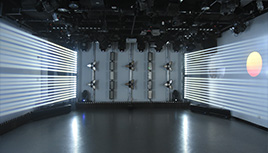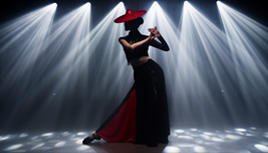Understanding the Impact of Stage Light Color Temperature and Gels
2025-03-19 Post By: Longmangroup
As a seasoned procurement manager in the stage lighting industry, understanding the impact of color temperature and gels is crucial when selecting the right lighting products for various events. Whether you're sourcing for a corporate event, concert tour, theater production, or wedding celebration, the correct choice of stage lighting can significantly influence the atmosphere, mood, and visual appeal of the performance. Below, I'll break down the factors involved in selecting the right color temperature and gels, along with tips for managing different types of lighting products for specific environments.
1. Understanding Color Temperature
Color temperature, measured in Kelvins (K), determines the warmth or coolness of the light emitted by a stage light. In stage lighting, color temperature plays a vital role in shaping the overall ambiance.
- Warm Lighting (2800K - 3200K): This range produces a soft, yellowish light, often associated with stage productions, theaters, and events with a vintage or romantic atmosphere. PAR lights and profile lights are common products for warm lighting.
- Neutral White Lighting (4000K - 5000K): Neutral lighting provides a more balanced color that does not lean too far toward warm or cool. This is ideal for corporate events or exhibitions where clarity is key.
- Cool Lighting (5000K - 6500K): Cool lighting emits a blue-toned light and is often used for concerts, music festivals, or any event where high visibility and dynamic effects are required. The crisp and bright nature of cool lighting energizes a crowd and gives clarity.
2. Selecting the Right Gels for Color Adjustment
Lighting gels are used to modify the color output of stage lights. These gels are particularly useful when working with moving head lights, PAR lights, or profile lights to adjust the light’s temperature or color tone.
- CTB (Color Temperature Blue): This gel is used to cool down the light by converting the warm light to a cooler, more natural white. For example, when using PAR lights with a 3200K color temperature, applying a CTB gel will bring the light closer to 5600K, which is ideal for daylight simulations.
- CTO (Color Temperature Orange): If you’re working with daylight-balanced fixtures (around 5600K), applying a CTO gel will warm the light, bringing it closer to 3200K. This can be particularly useful for enhancing skin tones in close-up shots during a performance or creating a warmer, more theatrical atmosphere in smaller venues.
- Other Color Gels: There are a wide variety of colored gels used to create specific lighting effects. These gels allow for creative expressions by altering the colors of the light, such as red, blue, green, or amber. Profile lights are especially popular for this use because of their adjustable beams and ability to project specific colored shapes or effects.
When purchasing lights, it is important to consider how each product's color temperature and gel compatibility aligns with your event's needs.
Examples by Lighting Type:
- Moving Head Lights: Moving heads, especially with RGBW LEDs, offer dynamic color-changing capabilities, but it’s crucial to control the color temperature when they are used in environments that require warm or cool lighting. Moving head lights are often used in concerts, allowing for dramatic changes in color temperature or for effect lighting, such as chases and sweeps.
- PAR Lights: These lights are often used for wash lighting, where gels can be used for both color temperature adjustment and creative coloring. PAR lights are essential in corporate events and theater settings, where a consistent wash of color is needed.
- Profile Lights: These lights offer precision, allowing you to focus beams and adjust color temperature. Often used for key lighting in theater productions, profile lights are flexible for use with various gels, including CTB or CTO for color temperature shifts.
- Laser Lights: Lasers typically operate at a set color temperature, but by adding gels or using lasers with adjustable settings, you can tweak the effect for a more dynamic look.
4. Challenges in Selecting the Right Color Temperature and Gels
Selecting the right color temperature and gels can present several challenges, particularly when considering the unique demands of various environments:
- Overheating and Burnout: Some color gels can reduce the efficiency of lights by absorbing heat, leading to potential overheating issues, especially in powerful lights like moving heads. Always check the manufacturer’s recommendations for gel compatibility with the light source.
- Inconsistent Color Mixing: When using color gels, it’s important to ensure that the gels will mix properly. Poor color mixing could create unflattering lighting effects and affect the overall appearance of the event.
- Budget vs. Quality Trade-offs: Higher-quality gels can be more expensive, and cheaper alternatives may not be as durable or effective in color correction.
5. Cost-Effectiveness and Market Evaluation
When selecting stage light manufacturers and gel suppliers, assess the cost-effectiveness of the products and the market competition. While premium lights and gels tend to offer superior performance, you may need to balance cost with the requirements of your event or client. Consider factors such as:
- Durability of Gels: High-quality gels will last longer, reducing the need for frequent replacements and saving costs over time.
- Compatibility with Multiple Lighting Types: Gels that can be used across different types of lighting (e.g., moving head lights, PAR lights) can be more cost-effective as they are versatile and reduce the need for multiple types of gels.














